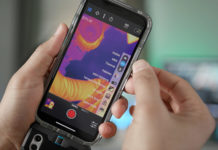Acne scars can be mild and unnoticeable, but for some individuals, the scarring is severe. The damaged skin can make you self-conscious and embarrassed. Fortunately, there are several things you can do to either minimize or eliminate acne scars. In some cases, a combination of treatments may work best. Talk to your doctor before trying any of the treatments mentioned to ensure you’re choosing one that’s right for your skin type and the severity of scarring.

Home Remedies
If your scarring is mild and you prefer home treatment, try natural remedies such as tea tree oil, coconut oil, honey, or turmeric. These can smooth out and moisturize the area but typically only work on the mildest form of scarring that occurs in only a few small areas.
Fillers & Injections
Fillers use collagen or fat beneath the skin surface, plumping the skin where scars are indented. This makes the scars less noticeable. The treatment is only temporary, so you’ll need to have new injections periodically. Steroid injections are injected into raised scars to shrink the area. The same caveat applies – it only lasts for a few months to a year, so you’ll need to have the procedure repeated.
Dermabrasion
Used only when scarring is most severe, a doctor performs dermabrasion. The top layer of the skin is removed using a rotating brush or sanding device. This can remove surface scars effectively and permanently. Even deep scarring can be minimized, but there is a recovery time when the skin will be quite sensitive. There is also the chance your skin will change color or develop scarring in response to the treatment.
Microneedling
During a session of microneedling for acne, a small tool studded with tiny, hair-thin needles is rolled over the skin to stimulate collagen production in the skin, triggering a healing response. This plumps up the skin where there is scarring and smooths out the area. There is no risk of skin discoloration or additional scarring, but you will need to have the procedure repeated periodically. Microneedling also breaks up the scar tissue so that any topical acne medications you use will absorb more deeply for greater effectiveness. Depending on the severity of scarring, most people undergo between two and eight sessions over several weeks.
Laser or Pulsed Light Treatments
There are several options using lasers, radiofrequency devices, or pulsed light to resurface the skin, making scars less noticeable. Laser resurfacing isn’t recommended for individuals with keloid scarring and can have side effects for those with darker skin.
Chemical Peels
In this method of treatment, a chemical solution is applied to acne scars, removing the surface skin layer and minimizing deep scars. There are several levels of peel. While you can only get one deep chemical peel, you can prolong the results with periodic mild and moderate chemical peels. There can be changes in skin color with peels, particularly with stronger chemical solutions.
With so many options to minimize or remove acne scars, there’s no reason not to get them treated. A trip to a dermatologist is the first step where they can professionally recommend a treatment that may work best for you and your skin.


















